Summer 2020 is expected to be near average or hotter across the Lower 48, according to the latest outlook issued by The Weather Company, an IBM Business. This summer is also expected to be warmer than last year for the contiguous United States.
Much of the Northeast and mid-Atlantic, with the exception of portions of northern New England, can anticipate above-average temperatures from June through August. Most of Maine, northern New Hampshire and far northeastern Vermont are expected to be near average or slightly warmer.
Warmer-than-average temperatures are also expected from the western Plains into the Northwest, Great Basin and Four Corners region. Temperatures will be farthest above average from eastern Washington and eastern Oregon into Idaho, central Montana, northwestern Colorado and northern Utah.
Southern California and southern Arizona, however, will trend closer to average or slightly warmer this summer. Areas from the eastern Plains into the Midwest and Southeast will also generally experience temperatures near to slightly above average.
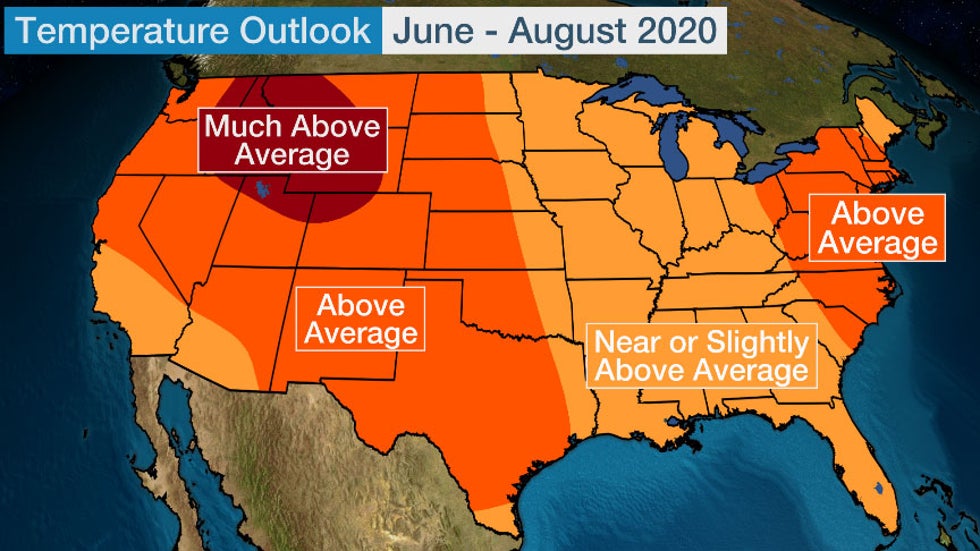 June through August 2020 temperature outlook from The Weather Company, an IBM Business.
June through August 2020 temperature outlook from The Weather Company, an IBM Business.La Niña conditions are expected to develop later this year and this is one factor that suggests that a hot summer is ahead for much of the Lower 48.
Sea-surface temperatures are beginning to cool in the equatorial Pacific while warmer water temperatures have emerged in the Indian Ocean and near Indonesia, indicating a transition to La Niña will occur this summer.
Temperatures in the contiguous U.S. typically are hotter than average when a shift toward La Niña takes place in the summer. Although the presence of La Niña, El Niño or neither are "less dynamically impactful in the summer than in the winter, historical analogs suggest a skew towards the hotter side of summer spectrum, as conditions dry out across the northern U.S.," noted Dr. Todd Crawford, chief meteorologist at The Weather Company.
Specifically, the West and Northeast will lean toward a hotter-than-average summer, with cooler conditions between those regions due to the expected transition to La Niña. This warmer trend in the western and northeastern U.S. is also supported by climate model forecasts.
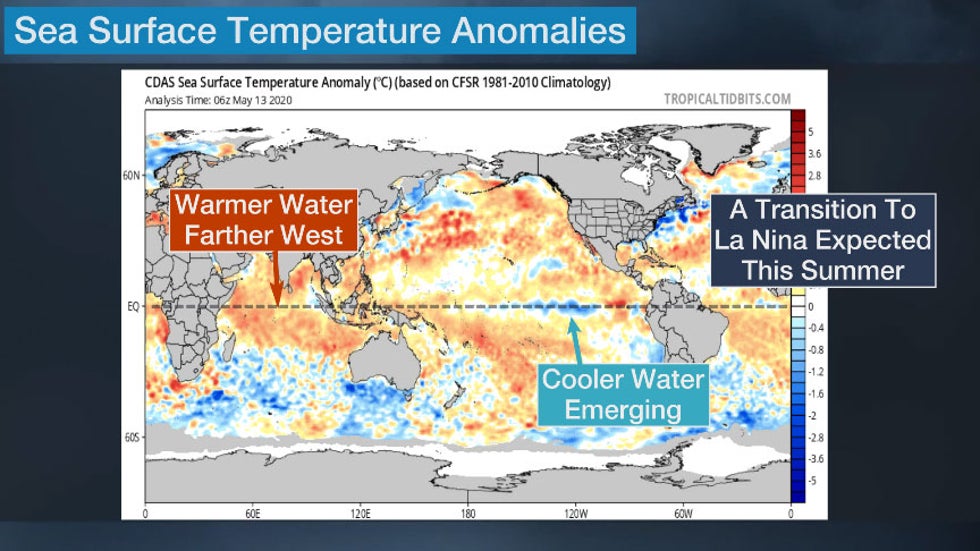 Sea-Surface Temperature Anomalies
Sea-Surface Temperature AnomaliesAnother factor in the summer outlook is soil moisture. The ground remains wetter than average from the Northern and Central Plains into the Ohio Valley and parts of the Southeast.
However, the soil is generally not as wet as last year and conditions are expected to dry out later this summer. Drier soil conditions correlate to warmer conditions and as a result, a slightly warmer summer compared to last year is anticipated in the north-central U.S.
Additionally, the upper-level pattern expected to be in place, along with climate models, indicate an unusually warm summer for much of the Lower 48.
Here's a closer look at what to expect month by month.
June
Above-average temperatures are anticipated in June from the Pacific Northwest into the Plains and across the South, with much-above-average conditions from eastern Washington and eastern Oregon southeastward into northwestern Colorado.
(MORE: What the Most Active Atlantic Hurricane Seasons Have Delivered in June, or Earlier)
Portions of Southern California and southeastern Arizona are expected to experience temperatures near average or slightly warmer.
The Midwest and the Northeast, with the exception of parts of northern New England, will also see temperatures near to slightly above average.
Temperatures for much of northern New England will trend near average to slightly below due to the upper-level pattern, which is expected to be influenced by a blocking area of high pressure near Greenland. This setup will allow for cooler conditions in parts of the Northeast in June.
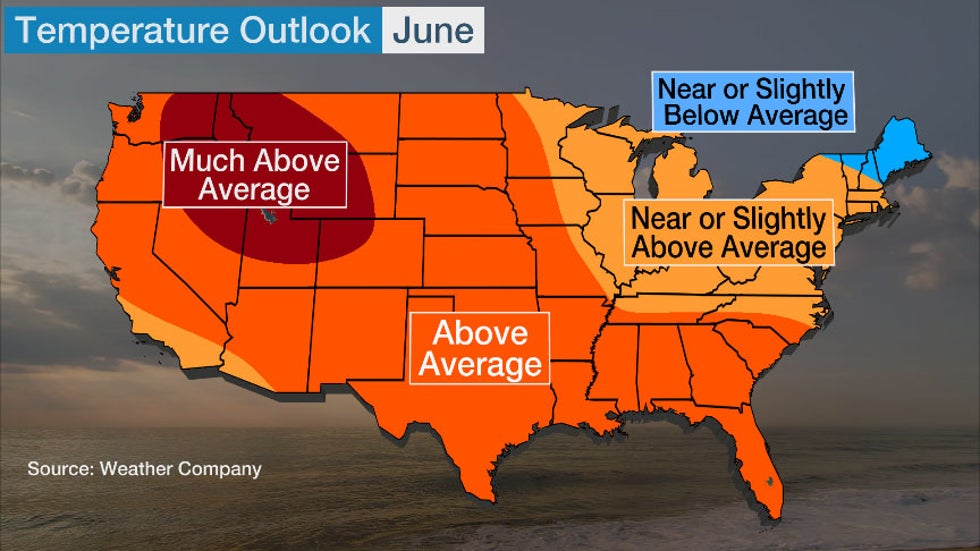 June 2020 temperature outlook from The Weather Company, an IBM Business.
June 2020 temperature outlook from The Weather Company, an IBM Business.July
Warmer-than-average temperatures are likely to develop across the Northeast and mid-Atlantic in July.
Much of the West and western Plains will also trend warmer than average. Temperatures will be farthest above average from Washington eastward into much of Montana and southward into northwestern Colorado and northern Utah.
Southern California, southern Nevada and southwestern Arizona will likely experience temperatures closer to average, as will areas from the eastern Plains into parts of the Midwest and Southeast.
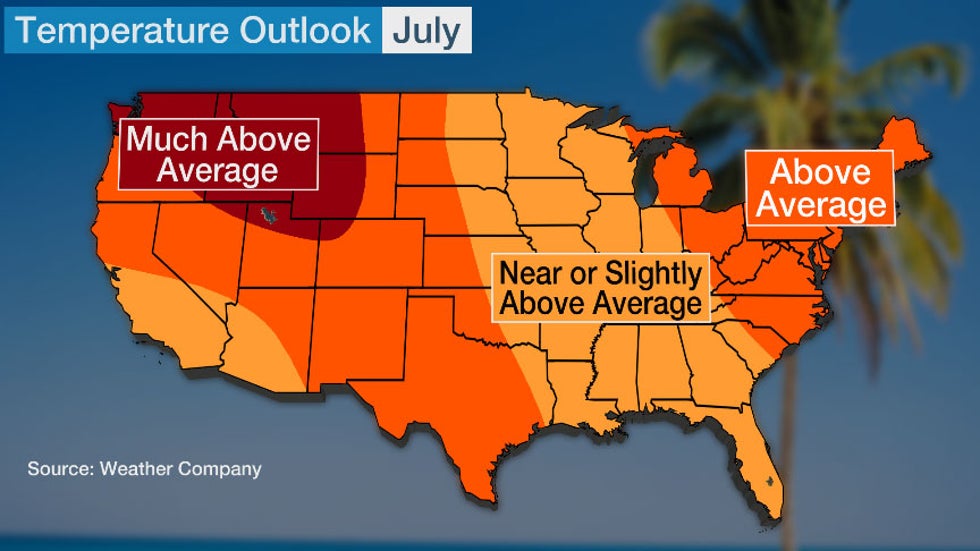 July 2020 temperature outlook from The Weather Company, an IBM Business.
July 2020 temperature outlook from The Weather Company, an IBM Business.August
The temperature pattern in August will look very similar to July.
Above-average conditions are anticipated in the Northeast, mid-Atlantic and eastern Great Lakes. Areas from the western Plains to the Northwest will also experience warmer-than-average conditions as summer comes to a close.
Temperatures will be farthest above average from central Montana southward into central Colorado.
Elsewhere, much of California and portions of the Southwest, as well as areas from the South into the Midwest, will likely see temperatures close to average or slightly warmer.
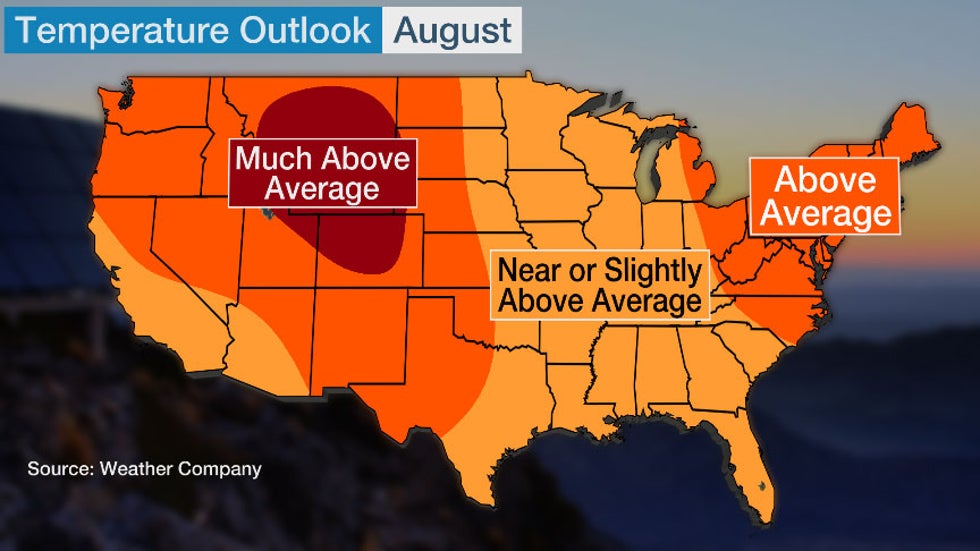 August 2020 temperature outlook from The Weather Company, an IBM Business.
August 2020 temperature outlook from The Weather Company, an IBM Business.The Weather Company’s primary journalistic mission is to report on breaking weather news, the environment and the importance of science to our lives. This story does not necessarily represent the position of our parent company, IBM.
The Weather Company’s primary journalistic mission is to report on breaking weather news, the environment and the importance of science to our lives. This story does not necessarily represent the position of our parent company, IBM.

No comments:
Post a Comment